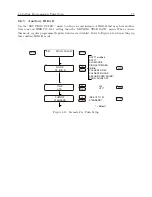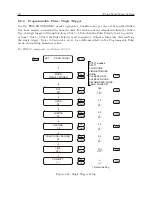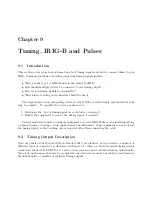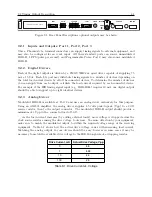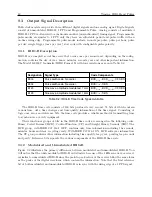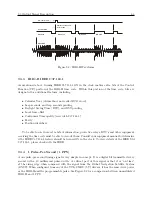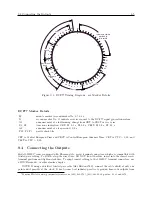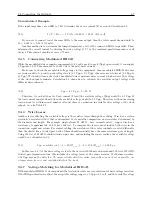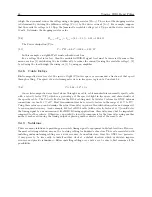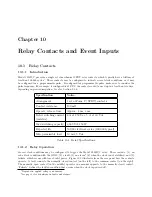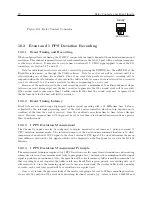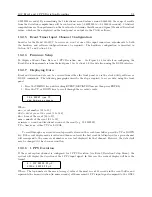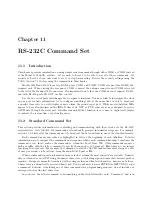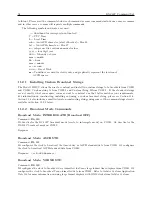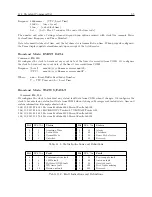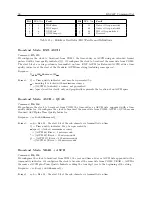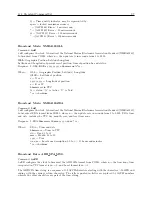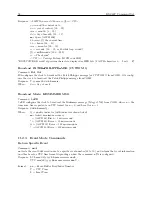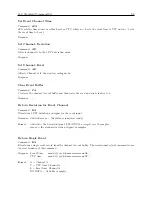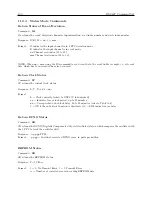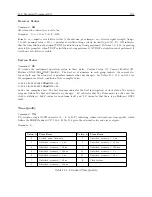
88
Timing, IRIG-B and Pulses
is high, then you must reduce the voltage using a dropping resistor (
R
drop
). The value of the dropping resistor
is determined by dividing the difference voltage (
V
dif f
) by the device current (
I
dev
). For example, suppose
that the available voltage is 4.3 Vpp, the (nominal) acceptable voltage is 3.3 Vpp, and the device current is
10 mA. Determine the dropping resistor value.
(9.4)
R
drop
=
V
dif f
÷
I
dev
= (4
.
3
−
3
.
3)
÷
0
.
01 = 100
.
4 Ω
The Power dissipation (P) is:
(9.5)
P
=
I
2
R
= 0
.
01
2
×
100
.
4 = 0
.
01
W
In this example, an eighth Watt resistor should work fine.
For a voltage that is too low, then the modulated IRIG-B signal level must be increased by some other
means, such as (1) distributing the load differently to reduce the current (raising the available voltage), (2)
by reducing the loss through the wiring, or (3) by using an amplifier.
9.4.8
Cable Delays
Electromagnetic waves travel at the speed of light (C) in free space or vacuum and a fraction of that speed
through cabling. The speed of an electromagnetic wave in free space is given by Constant 9.6.
(9.6)
C
≈
9
.
84
×
10
8
f t/s
Since electromagnetic waves travel slower through any cable, cable manufacturers normally specify cable
with a velocity factor (VF), which is a percentage of the speed of light in free space, and characteristic of
the specific cable. The Velocity Factor for the RG-6 cabling used by Arbiter Systems for GNSS antenna
connections, is about 83 % of C. Most transmission lines have velocity factors in the range of 65 % to 97%.
Using these values you can determine the actual time delay in your cable distribution system and compare it
to your required accuracy. As an example, 840 feet of RG-6 cable (with a velocity factor of 83 %) would delay
the timing signal by one microsecond. For IRIG-B timing applications, these delays may not be important,
compared to other criteria. Otherwise, you would be forced to compensate for the time delay using another
method, such as advancing the timing output or placing another master clock at the remote site.
9.4.9
Solutions
There are many solutions to providing an accurate timing signal to equipment in distant locations. However,
the most satisfying solution may not be to string cabling for hundreds of meters. The costs associated with
installing and maintaining cabling over a wide area may be unsatisfactory. Since the GNSS is so pervasive,
it may prove to be less costly to install another clock at a distant location, which would also improve
accuracy and provide redundancy. Before installing cabling over a wide area, be sure to first examine all the
possibilities.
Summary of Contents for 1201B
Page 4: ...iv ...
Page 153: ...B 7 Four Fiber Optic Outputs 135 Figure B 4 Jumper Locations ...


